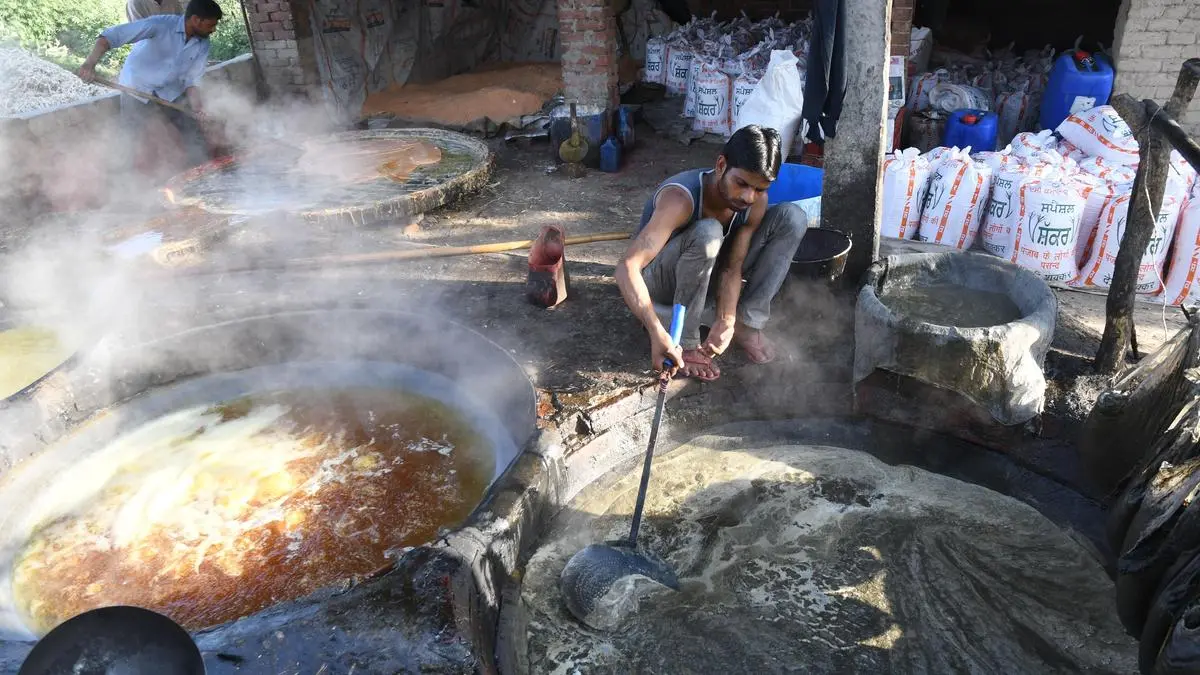After amending the Sugar (Control) Order in May to include ‘khandsari’ or ‘bura’ type under definition of sugar, the registration process has been slow due to several issues including non-parity between a ‘khandsari’ unit and sugar mill with regard to realisation of sucrose and the ability to pay the same sugarcane price.
Only a few units are said to have registered while the government is also not keen on enforcing it immediately since it is a new beginning for the units and it was felt that sufficient time needed for those factories to adjust with compliance issues, sources said.
Sugar has been defined as “any form of sugar containing more than 90 per cent of sucrose (polarisation), including raw, plantation white, refined sugar including sugar candy; or khandsari sugar or bura sugar or crushed sugar or any sugar in crystalline or powdered or liquid form” in the Order.
There are over 370 khandsari units with a total capacity of about 95,000 tonnes (cane) crushed per day (TCD) in the country. Out of these, an estimated 66 units have a capacity of more than 500 TCD, each and only those units are covered under the amended Order, officials had earlier said.
The khandsari units with 500 TCD or more capacity have to register on the National Single Window System (NSWS). These factories are supposed to share sugar production, sales data digitally with government organisations, like what the sugar mills are doing. Apart from reporting their sugar balance sheet, these units will also have to buy sugarcane at the government-set price.
However, as these units had approached the government seeking separate sugarcane price saying the juice recovery from sugarcane in khandsari factories is much lower compared to sugar mills. Following which the Food Ministry had written a few months back to the Commission for Agricultural Costs and Prices (CACP) to examine the demand for a separate fair and remunerative price (FRP) for khandsari units.
Sources said that the CACP does not have past data about the recovery in khandsari units and to recommend any separate price it requires at least three years statistics, it has informed the Ministry accordingly.
“Since the number of such units (more than 500 TCD) is very less, the government has to start collecting data from these Khandsari makers from this season, as most of the mills are located in Uttar Pradesh where the sugarcane crushing has commenced a few days back,” an industry expert said adding all these units should be persuaded to register.
Meanwhile, the Food Ministry, on November 6, clarified that the monthly stock holding limit (quota for domestic sales) is not applicable on khandsari sugar factories “as of now and there is no restriction imposed on the sale of khandsari sugar.”
All khandsari units are free to sell khandsari sugar in the open market as before and the decision has been made to balance the operational viability of khandsari units, the Ministry said. However, registration of such units is essential to ascertain the actual production and consumption of khandsari sugar across the country, it added.
The Order has also included raw variety under definition of sugar to prevent it from being marketed under misleading names like khandsari or organic sugar. The requirement to amend the Order was felt due to the sugar sector has undergone through multiple changes in the past few years, officials had said.
Published on November 7, 2025
